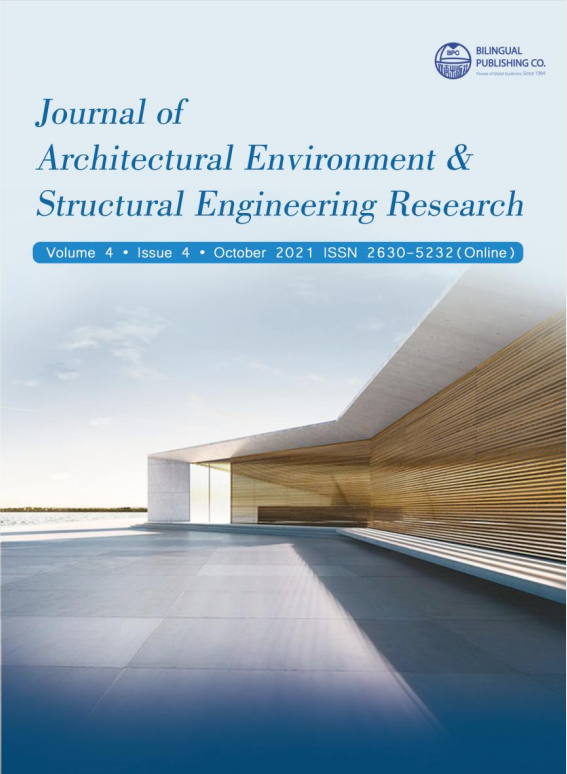-
371
-
208
-
183
-
179
-
168
Strength & Conduct of Reinforced Concrete Corner Joint under Negative Moment Effect
DOI:
https://doi.org/10.30564/jaeser.v4i4.3607Abstract
The aim of our study is to reveal the effect of steel reinforcement details,tensile steel reinforcement ratio, compressed reinforcing steel ratio,reinforcing steel size, corner joint shape on the strength of reinforcedconcrete Fc' and delve into it for the most accurate details and concreteconnections about the behavior and resistance of the corner joint ofreinforced concrete, Depending on the available studies and sources inaddition to our study, we concluded that each of these effects had a clearrole in the behavior and resistance of the corner joint of reinforced concreteunder the influence of the negative moment and yield stress. A studyof the types of faults that can be reinforced angle joints obtains detailsand conditions of crushing that are almost identical for all types of steelreinforcement details and the basic requirements for the acceptable behaviorof reinforced concrete joints in the installations and the efficiency of thejoint and this may help us to prepare for disasters, whether natural or other,as happens with tremors The floor and failure that may occur due to wrongdesigns or old buildings and the possibility of using those connections totreat those joints and sections in reinforced or unarmed concrete facilitiesto preserve the safety of humans and buildings from sudden disasters andreduce and reduce risks, as well as qualitative control over the productionof concrete connections and sections free from defects to the extreme.Keywords:
Concrete design; Strength materials; Reinforced corner joint; StructureReferences
[1] Richart, F. E., Olson, T. A., & Dolan, T. J. (1938). Tests of reinforced concrete knee frames and bakelite models. Univ. Illinois Expt. Sta. Bull, 307.5.)kemp , E.L. and Makherjee P.R.
[2] Moretti, M. L., Tassios, T. P., & Vintzileou, E. (2014). Behavior and Design of Corner Joints under Opening Bending Moment. ACI Structural Journal, 111(1).
[3] Pham, A. T., Pham, X. D., & Tan, K. H. (2019). Slab corner effect on torsional behaviour of perimeter beams under missing column scenario. Magazine of Concrete Research, 71(12), 611-623.
[4] Nabil, M., Hamdy, O., & Abobeah, A. (2016). Affecting aspects on the behaviour of frame joints. HBRC journal, 12(2), 147-162.
[5] Johansson, M. (1996). New reinforcement detailing in concrete frame corners of civil defence shelters: Non-linear finite element analyses and experiments. Chalmers University of Technology.
[6] Abdul-Wahab, H. M., & Ali, W. M. (1989). Strength and behavior of reinforced concrete obtuse corners under opening bending moments. Structural Journal, 86(6), 679-685.
[7] Sleiman, N. (2017). Tests on GFRP reinforced concrete knee-joints subjected to negative moments (Doctoral dissertation, University of Waterloo).
[8] Moehle, J. P., Hooper, J. D., & Lubke, C. D. (2008). Seismic design of reinforced concrete special moment frames. US Department of Commerce.
[9] ACI Committee. (2008). Building code requirements for structural concrete (ACI 318-08) and commentary. American Concrete Institute.
[10] Petroski, H. (2012). To forgive design. Harvard University Press.
[11] Al-Khafaji, J. M. N. (1980). The effect of size and percentage of tension reinforcement on the behaviour of reinforced concrete (Doctoral dissertation, University of Southampton).
[12] Swann, R. A. (1969). Flexural strength of corners of reinforced concrete portal frames.2.)Mayfield , B,Kong,F.K Bennison A. and ,davis ,J.C.D.T.
[13] Kemp, E. L., & Mukherjee, P. R. (1968). Inelastic behavior of concrete knee-joints’’. The Consulting Engineer, 44-48.
[14] Mayfield, B., Kong, F. K., Bennison, A., & Davies, J. C. T. (1971, May). Corner joint details in structural lightweight concrete. In Journal Proceedings (Vol. 68, No. 5, pp. 366-372).
[15] Mukherjee, P. R., & Coull, A. (1972). Free vibrations of coupled shear walls. Earthquake Engineering & Structural Dynamics, 1(4), 377-386.
[16] Park, S., & Mosalam, K. M. (2012). Experimental and analytical studies on reinforced concrete buildings with seismically vulnerable beam-column joints. Pacific Earthquake Engineering Research Center.




 Rasha A Waheeb
Rasha A Waheeb





